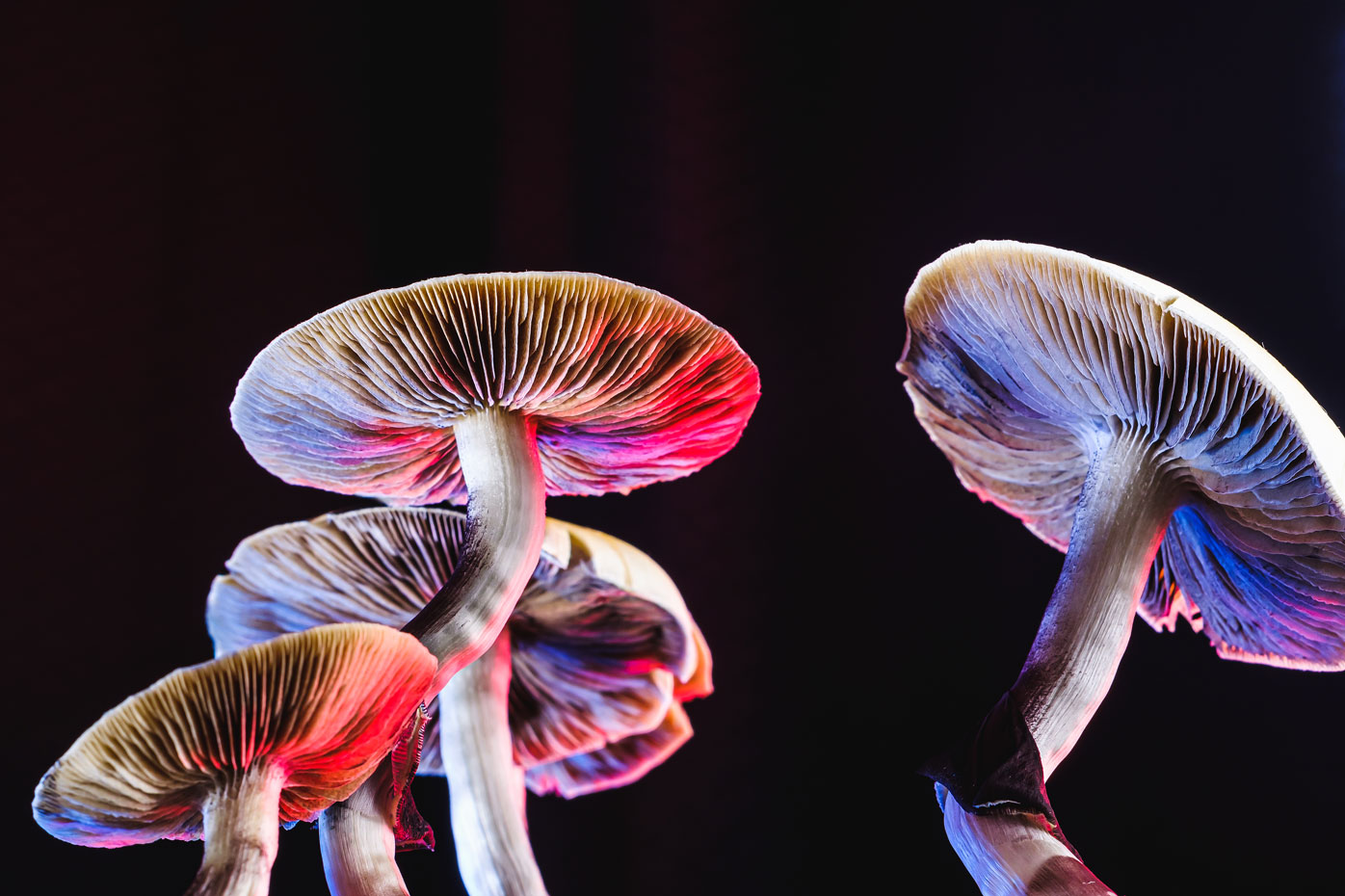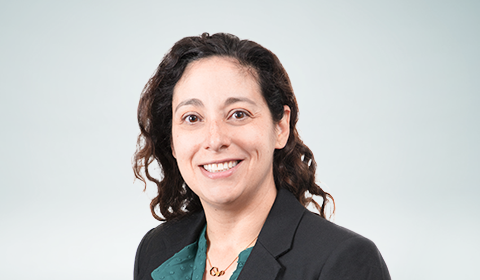Psychedelic substances have followed a unique trajectory for the past 60-70 years. They are most commonly regarded as drugs of abuse and include LSD, MDMA (ecstasy) and psilocybin.
However, there is growing interest and research examining their potential as medical therapy for conditions such as depression, anxiety, and post-traumatic stress disorder (PTSD). This has led to FDA-expedited development and review of psilocybin as a potential pharmacologic therapy for treatment-resistant depression, as well as approval of esketamine in 2019 for treatment-resistant depression in conjunction with oral antidepressant use. Psychedelic use remains illegal at the federal level; however, many states and local jurisdictions are moving toward decriminalization and legalization of these substances.
Much of the available data regarding the therapeutic use of psychedelics for mental health disorders remains introductory; however, momentum is building with the potential to offer unique treatments for many complex mental health disorders.
- Esketamine (Spravato) is the only FDA-approved psychedelic treatment. It is a nasal spray indicated for use in adults with treatment-resistant depression or major depression with suicidal ideation.
- Ketamine is being used off-label as an infusion for treatment-resistant major depression and suicidal ideation based on preliminary evidence of efficacy.
- Several other psychedelics (psilocybin, MDMA, DMT) are currently in active clinical trials for psychiatric disorders, including PTSD, major depression and treatment-resistant depression.
- The legal landscape is changing, with more US municipalities proposing legislation to decriminalize and legalize psychedelics for medical and recreational use.
The cultural arc of psychedelic drugs has been broad over the last 5-7 decades. While LSD and psilocybin were initially seen as potentially promising treatments for disorders such as trauma, depression, anxiety and addiction, this promise gave way to panic given their association with 1960s counterculture.1 By 1970, experiments and clinical research using psychedelics in the U.S. ended with the passing of the Controlled Substances Act (CSA), part of the Comprehensive Drug Abuse Prevention and Control Act of 1970. The CSA categorized drugs into five groups, known as the “drug schedule,” which was based on medical use and potential for abuse. Those placed on Schedule I do not have an accepted medical use and are considered the most dangerous. These drugs currently include LSD, marijuana (cannabis), MDMA and psilocybin.2,3,4
However, more recently, interest in psychedelics as medical therapy has once again become prominent in the public consciousness. Their potential impact is being evaluated in numerous clinical trials for conditions such as PTSD, drug dependency, depression, anxiety and eating disorders.5 The FDA has responded to the increased scientific interest in psychedelics by granting “breakthrough therapy” designation to psilocybin therapy for treatment-resistant depression (TRD), (2018)6 and major depressive disorder (MDD), (2019).7 This status is granted to expedite drug development and review for serious conditions if preliminary clinical evidence meets the criteria of “substantial improvement” over available therapies.8 MDMA-assisted therapy for PTSD received breakthrough therapy designation in 2017, and Phase III trials were set to begin in 2018.9 Currently, esketamine is the only FDA-approved and widely available psychedelic treatment. Esketamine is a more potent version of ketamine, an anesthetic, and was approved by the FDA in March 2019 as a Schedule III controlled substance for treatment-resistant depression in con- junction with oral antidepressant use.10 Schedule III substances are those which have low-to-moderate potential for psychological and physical dependence, with less potential for abuse than Schedule I and II drugs.11
Several U.S. states and municipalities are also proposing or have already decriminalized and legalized the use of psilocybin, MDMA and LSD.12 (See Appendix A, page 58.) Legalization lifts federal or state bans on a drug, whereas decriminalization means that a once-banned drug is still prohibited by law, but the legal system can no longer criminalize or prosecute an individual for carrying under a certain amount. Oregon is currently the only state to have legalized and decriminalized psilocybin with the November 2020 Ballot Measure 109.13 This state statute authorized the Oregon Health Authority to create a program permitting licensed providers to administer psilocybin products to individuals aged 21 and older. Beginning January 2, 2023, Oregon Psilocybin Services, a division of the Oregon public health department, began accepting applications for licensure.14 Denver became the first U.S. city to decriminalize psilocybin in 2019, with over a dozen other cities in the U.S. following suit.15,16
One of the most commonly known psychedelics is ketamine. It is a mixture composed of two mirror-image molecules, R- and S-ketamine. It was FDA-approved for use as an anesthetic agent (Ketalar) in 1970 and became a Schedule III non-narcotic substance in 1999. As an anesthetic, it is an NMDA (N-methyl- D-aspartate) receptor antagonist, meaning it stops the effect of NMDA and produces a state of dissociative anesthesia, providing pain relief, amnesia and sedation. It is not FDA-approved for the treatment of any psychiatric disorder. Despite the relatively small sample sizes in available trials, limited safety data and lack of long-term efficacy studies, off-label ketamine use is on the rise for treatment-resistant unipolar major depression and suicidal ideation. It is estimated there are hundreds of ketamine providers in the U.S.17 In these clinics, ketamine is administered as a slow intravenous infusion at subanesthetic doses, with rapid but transient benefits that are observed within hours, peak after a day, and are lost within 3-12 days. Scheduled ketamine infusions every 2-4 days can provide sustained relief up to weeks or months. Side effects include transient elevation of heart rate and blood pressure, as well as mild dissociation and altered perception, similar to psychosis. The development of a rapidly diminishing response to successive doses of the drug, as well as dependency with prolonged use, can also occur.18
There are no well-established clinical predictors or biomarkers of the acute response to a single infusion of ketamine. However, response may be more likely to occur in patients who are more severely depressed at baseline. Concurrent treatment with other antidepressants appears not to decrease their efficacy or increase side effects. In trials, ketamine has been given as monotherapy or add-on therapy to antidepressants and antipsychotics.18,19 Ketamine is currently registered in numerous Phase III clinical trials for conditions including depression, substance abuse and chronic pain.20
Esketamine is a more potent version of ketamine, specifically the S-ketamine molecule, and is available as an FDA-approved nasal spray called Spravato. As with ketamine, there is supportive evidence of benefit in treatment-resistant unipolar major depression and suicidality. A 2.5-year multicenter, double-blind, randomized withdrawal study showed increased long- term benefit in individuals with major depression who were treated with the combination of esketamine and an antidepressant.21 The side effect profile may be less with ketamine, but there are no comparison trials. Adverse effects occur at least twice as often with intranasal esketamine plus antidepressant, compared with placebo, and these include anxiety, increased blood pressure, dissociation, dizziness, nausea, sedation and vertigo.
Psilocybin, lysergic acid diethylamide (LSD), mescaline and N,N-dimethyltryptamine (DMT) are types of serotonergic hallucinogens that share agonism for the serotonergic 5HT2A receptor. These psychedelics may be synthetic, such as LSD, or found in nature, such as DMT, mescaline and psilocybin. Psilocybin is present in mushrooms of the genus Psilocybe, and mescaline is present in peyote and San Pedro cacti. DMT is present in the botanical preparations jurema and ayahuasca. Their primary effects include changes in mood (euphoria, bliss, joy), cognitive processes (introspection, self-consciousness, altered time pas- sage, mystical experiences), and mainly visual sensory perception. While their therapeutic properties have been studied dating back to the 1950s, there is growing interest regarding the promising antidepressant, anti-addictive and anxiolytic effects of these hallucinogens.





